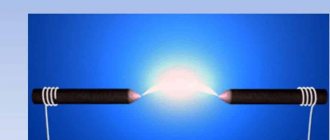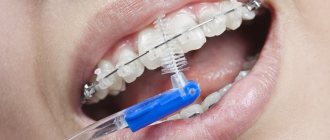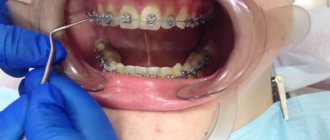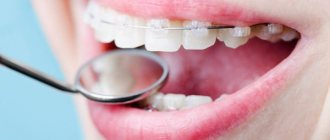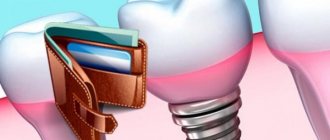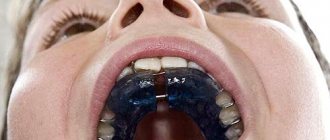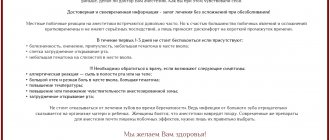Sound-letter analysis of a word: what is the difference between sounds and letters?
Before moving on to phonetic analysis with examples, we draw your attention to the fact that letters and sounds in words are not always the same thing.
Letters are writing, graphic symbols, with the help of which the content of a text is conveyed or a conversation is outlined. Letters are used to visually convey meaning; we perceive them with our eyes. The letters can be read. When you read letters out loud, you form sounds - syllables - words.
A list of all the letters is just an alphabet
Almost every schoolchild knows how many letters are in the Russian alphabet. That's right, there are 33 of them in total. The Russian alphabet is called the Cyrillic alphabet. The letters of the alphabet are arranged in a certain sequence:
| Ahh | "A" | BB | "bae" | Vv | "ve" | GG | "ge" |
| Dd | "de" | Her | "e" | Her | "yo" | LJ | "zhe" |
| Zz | "ze" | Ii | "And" | Yikes | "th" | Kk | "ka" |
| Ll | "el" | Mm | "Em" | Nn | "en" | Ooh | "O" |
| pp | "peh" | RR | "er" | Ss | "es" | Tt | "te" |
| Ooh | "y" | Ff | "eff" | Xx | "Ha" | Tsts | "tse" |
| Hh | "che" | Shh | "sha" | Shch | "sha" | ъ | "t.z." |
| Yyy | "s" | b | "m.z." | Uh | "uh" | Yuyu | "yuh" |
| Yaya | "ya" |
In total, the Russian alphabet uses:
- 21 letters for consonants;
- 10 letters - vowels;
- and two: ь (soft sign) and ъ (hard sign), which indicate properties, but do not themselves define any sound units.
Sounds are fragments of vocal speech. You can hear and pronounce them. Between themselves they are divided into vowels and consonants. When analyzing words phonetically, you analyze them.
You often pronounce sounds in phrases differently from how you write them in writing. In addition, a word may use more letters than sounds. For example, “children’s” - the letters “T” and “S” merge into one phoneme [ts]. And vice versa, the number of sounds in the word “blacken” is greater, since the letter “Yu” in this case is pronounced as [yu].
Everything about braces and brace systems, history, types of braces
Many problems fade if you smile more often. People with gloomy and gloomy faces are unlikely to remember this truth. Or maybe they are just embarrassed to smile? Unfortunately, not everyone has been blessed with a beautiful smile by nature. Defects, deformations, and improper growth of teeth cause certain inconveniences, including from an aesthetic point of view. However, these inconveniences last only until a visit to a good orthodontist. Dentistry of the 21st century combats dental anomalies with the help of braces. Braces are a permanent orthodontic device designed to correct uneven teeth and malocclusion. On the teeth, braces look like an arch on which “clasps” are attached.
What is phonetic analysis?
We perceive spoken speech by ear. By phonetic analysis of a word we mean the characteristics of the sound composition. In the school curriculum, such analysis is more often called “sound-letter” analysis. So, with phonetic analysis, you simply describe the properties of sounds, their characteristics depending on the environment and the syllabic structure of a phrase united by a common word stress.
Phonetic transcription
For sound-letter parsing, a special transcription in square brackets is used. For example, it is correctly written:
- black -> [ch'orny']
- apple -> [yablaka]
- anchor -> [yakar']
- Christmas tree -> [yolka]
- sun -> [sontse]
The phonetic parsing scheme uses special symbols. Thanks to this, it is possible to correctly designate and distinguish the letter notation (spelling) and the sound definition of letters (phonemes).
- the phonetically parsed word is enclosed in square brackets – [ ];
- a soft consonant is indicated by a transcription sign ['] - an apostrophe;
- shock [´] - accent;
- in complex word forms from several roots, the secondary stress sign [`] is used - gravis (not practiced in the school curriculum);
- the letters of the alphabet Yu, Ya, E, Ё, ь and Ъ are NEVER used in transcription (in the curriculum);
- for doubled consonants, [:] is used - a sign of the longitude of the sound.
Below are detailed rules for orthoepic, alphabetic, phonetic and word analysis with online examples, in accordance with general school standards of the modern Russian language. Professional linguists' transcriptions of phonetic characteristics differ in accents and other symbols with additional acoustic features of vowel and consonant phonemes.
Fact No. 7 - braces are not only for teenagers, but also for adults
Braces are only for children and teenagers, of course, this was a stereotype of the past. The American Association of Orthodontics reported that approximately one in five orthodontic patients are adults. These days, parents, grandparents and even great-grandparents are determined to reap the benefits of a healthy bite and a straighter smile. It's never too late!
Read also: How baby teeth grow in children
But you should know that the most effective treatment with braces occurs in children. The sooner you take your child for his first orodontist consultation, the sooner you will know what he may need. The American Association of Orthodontics recommends that your child be seen by an orthodontist by age seven. Some incorrect inclusions are best corrected young; in fact, sometimes timely orthodontic care for a small child can completely solve the problem of malocclusion and the child will not have to wear braces!
How to make a phonetic analysis of a word?
The following diagram will help you carry out letter analysis:
- Write down the necessary word and say it out loud several times.
- Count how many vowels and consonants there are in it.
- Indicate the stressed syllable. (Stress, using intensity (energy), distinguishes a certain phoneme in speech from a number of homogeneous sound units.)
- Divide the phonetic word into syllables and indicate their total number. Remember that syllable division in is different from the rules of transfer. The total number of syllables always matches the number of vowels.
- In the transcription, sort the word by sounds.
- Write the letters from the phrase in a column.
- Opposite each letter, in square brackets [ ], indicate its sound definition (how it is heard). Remember that sounds in words are not always identical to letters. The letters "ь" and "ъ" do not represent any sounds. The letters “e”, “e”, “yu”, “ya”, “i” can represent 2 sounds at once.
- Analyze each phoneme separately and indicate its properties separated by commas: for a vowel we indicate in the characteristic: vowel sound; stressed or unstressed;
- in the characteristics of consonants we indicate: consonant sound; hard or soft, voiced or deaf, sonorant, paired/unpaired in hardness-softness and sonority-dullness.
This scheme is practiced in the school curriculum.
An example of phonetic analysis of a word
Here is a sample phonetic analysis of the composition for the word “phenomenon” → [yivl'e′n'ie]. In this example there are 4 vowels and 3 consonants. There are only 4 syllables: I-vle′-n-e. The emphasis falls on the second.
Sound characteristics of letters:
i [th] – acc., unpaired soft, unpaired voiced, sonorant [i] – vowel, unstressedv [v] – acc., paired hard, paired sound l [l'] – acc., paired soft., unpaired . sound, sonorant [e′] – vowel, stressed [n’] – consonant, paired soft, unpaired sound, sonorant and [i] – vowel, unstressed [th] – consonant, unpaired. soft, unpaired sound, sonorant [e] – vowel, unstressed________________________In total, the word phenomenon has 7 letters, 9 sounds. The first letter “I” and the last “E” each represent two sounds.
Now you know how to do sound-letter analysis yourself. The following is a classification of sound units of the Russian language, their relationships and transcription rules for sound-letter parsing.
Phonetics and sounds in Russian
What sounds are there?
All sound units are divided into vowels and consonants. Vowel sounds, in turn, can be stressed or unstressed. The consonant sound in Russian words can be: hard - soft, voiced - dull, hissing, sonorant.
— How many sounds are there in Russian living speech?
Doing phonetic analysis online, you will find that 36 consonant sounds and 6 vowels are involved in word formation. Many people have a reasonable question: why is there such a strange inconsistency? Why does the total number of sounds and letters differ for both vowels and consonants?
All this is easily explained. A number of letters, when participating in word formation, can denote 2 sounds at once. For example, softness-hardness pairs:
- [b] - cheerful and [b'] - squirrel;
- or [d]-[d']: home - to do.
And some do not have a pair, for example [h'] will always be soft. If you doubt it, try to say it firmly and make sure it is impossible: stream, pack, spoon, black, Chegevara, boy, little rabbit, bird cherry, bees. Thanks to this practical solution, our alphabet has not reached dimensionless proportions, and the sound units are optimally complemented, merging with each other.
Types of arches for braces, taking into account the metal used
Arc products for braces are divided into 3 main types.
Steel arcs
Arches made of steel (3M steel arch) are considered a classic option in orthodontics, which has been used since the first days of the existence of these structures, but to this day this type is actively used by orthodontists when installing braces. This type is characterized by low cost of material, sufficient rigidity and elasticity. Steel products are divided into several types:
- made from a single piece of wire;
- made using a braided method using 3–6 pieces of wire of a finer structure.
DETAILS: Dental veneers. Dental restoration and a snow-white, even smile in Moscow Art. m. Krasnoselskaya.
Braided arches are often used at the beginning of the treatment of malocclusion pathologies. They are considered a more affordable alternative to arches that are made from an alloy using nickel and titanium.
The product is designated as “TMA arch 3M” and is used in the middle of the entire period of bite correction. The material has greater rigidity, but at the same time greater elasticity, in comparison with its steel relatives.
This product is used in cases where it is necessary to create a lot of pressure on the teeth, but if you use a product made of steel, it will cause pain in the patient. Also, the product, made of molybdenum and titanium, perfectly replaces conventional arches, which makes it possible for the patient to visit the orthodontist less often.
This alloy has another important property – hypoallergenicity. Many products that contain nickel cause allergic reactions in patients. Arcs made of titanium and molybdenum eliminate such manifestations.
These products are marked Ni-Ti 3M. They began to be produced only 20 years ago, but have already achieved great success in orthodontics due to their elastic qualities. Ideal for treating malocclusions for the first months of treatment or for minor deviations.
They are divided into several varieties. The most popular are thermoactive or temperature-dependent products. Their peculiarity is that the influence of normal temperature allows the product to be given the shape required for installation, and once installed, the product remembers its task assigned during manufacture and activates work at full strength.
These features make it possible to significantly reduce the number of arches used during the period of bite correction. The success lies in the fact that you can immediately install an arc with a rectangular cross-section, bypassing the round one. This means that the patient will be less likely to contact the attending physician due to arch replacement.
The disadvantage of this type of product is the need to control the temperature in the oral cavity. Sudden changes in temperature can lead to changes in the basic properties of the product, which will cause the entire brace system to malfunction. As a result, instead of straightening the teeth, the patient may experience even greater complications in the bite.
A significant disadvantage of threaded arcs is their fragility. During the treatment period, the patient will have to reconsider his diet in order to exclude solid foods from it. Also, when choosing, it is worth considering the high cost of this material. Compared to steel analogues, such a product will cost three times more.
Vowel sounds in Russian words
Vowel sounds, unlike consonants, are melodic; they flow freely, as if in a chant, from the larynx, without barriers or strain on the ligaments. The louder you try to pronounce the vowel, the wider you will have to open your mouth. And vice versa, the louder you try to pronounce a consonant, the more energetically you will close your mouth. This is the most striking articulatory difference between these phoneme classes.
The stress in any word form can only fall on the vowel sound, but there are also unstressed vowels.
— How many vowel sounds are there in Russian phonetics?
Russian speech uses fewer vowel phonemes than letters. There are only six shock sounds: [a], [i], [o], [e], [u], [s]. And let us remind you that there are ten letters: a, e, e, i, o, u, y, e, i, yu. The vowels E, Yo, Yu, Ya are not “pure” sounds and are not used in transcription. Often, when parsing words by letter, the emphasis falls on the listed letters.
We are professionals in our field
During the initial consultation, our doctors will conduct an examination, diagnose the health of your teeth, and then draw up a competent treatment plan from which you can choose the methods and options that suit you in terms of time and cost. High professionalism allows us to find various ways out of the most difficult situations.
Our dental clinic was founded in 1992 by a team of passionate dentists.
In the historical center of St. Petersburg st. m. "Pl. Uprisings"
Since then, the priority of our work has been the high quality of service to our patients.
Providing comfort and reliability in the treatment of oral diseases is not an easy task, but we have been successfully handling it for more than twenty years.
Phonetics: characteristics of stressed vowels
The main phonemic feature of Russian speech is the clear pronunciation of vowel phonemes in stressed syllables. Stressed syllables in Russian phonetics are distinguished by the force of exhalation, increased duration of sound and are pronounced undistorted. Since they are pronounced clearly and expressively, sound analysis of syllables with stressed vowel phonemes is much easier to carry out. The position in which the sound does not undergo changes and retains its basic appearance is called a strong position. This position can only be occupied by a stressed sound and a syllable. Unstressed phonemes and syllables are in a weak position.
- The vowel in a stressed syllable is always in a strong position, that is, it is pronounced more clearly, with the greatest strength and duration.
- A vowel in an unstressed position is in a weak position, that is, it is pronounced with less force and not so clearly.
In the Russian language, only one phoneme “U” retains unchangeable phonetic properties: kukuruza, plank u, uch u s, u lov - in all positions it is pronounced clearly as [u]. This means that the vowel “U” is not subject to qualitative reduction. Attention: in writing, the phoneme [y] can also be indicated by another letter “U”: muesli [m' u ´sl'i], key [kl' u ´ch'], etc.
Analysis of the sounds of stressed vowels
The vowel phoneme [o] occurs only in a strong position (under stress). In such cases, “O” is not subject to reduction: cat [k o´ t'ik], bell [kalak o´ l'ch'yk], milk [malak o´], eight [v o´ s'im'], search [paisk o´ vaya], dialect [g o´ var], autumn [o´ s'in'].
Features of the material of manufacture
The simplest design includes a groove for a wire arch, ligature wings for fixing the arch with ligatures, and retention elements on the base for attachment to the surface of the tooth enamel. Vertical movement of teeth will be ensured by the simple presence of an arch in the bracket groove, lateral movement by the possibility of sliding the arch inside the groove, and rotational moment by the mesiodistal size of the bracket.
What are braces? In dentistry, this name refers to a non-removable device that is attached to the outer or inner surface of the teeth. With the help of an orthodontic arch, the braces return to their desired position after any bending. As an additional impact on the teeth, cheek locks, orthodontic chains, springs, and rings are also used.
Metal structures are considered the most reliable and simple. They are characterized by high strength, as well as minimal friction between the grooves and the arc. They are made from titanium, stainless steel and titanium-nickel alloy. The only drawback is that they are very noticeable. To give them aesthetics, ligatures of different colors are used. Children and teenagers prefer shaped models in the form of stars, hearts, etc.
Ceramic braces have a more aesthetic appearance, are durable and do not oxidize. Their color scheme matches the color of the teeth, so they are practically invisible. Among the disadvantages is the high friction between the arc and the groove, but despite this, this design is very popular.
Sapphire models are made from artificial sapphire crystals, which are characterized by high strength. Due to the fact that they are completely transparent, they have an attractive appearance. These braces are not stained and do not retain plaque. They are much easier to care for than metal structures.
If braces have been installed, the time of wearing them is determined only by the attending orthodontist. He focuses on factors such as the patient’s age, the degree of malocclusion, the condition of the dentition, and the quality of the design.
DETAILS: Prices, cost of dental services in Kazan
The duration of wearing the product depends on how complex the case is. To correct severe curvature of the bite, it is recommended to wear this design for 2-3 years, but there are situations when wearing braces extends for 5 years. However, such cases are extremely rare. The minimum period is 6 months.
Those who installed this design note a positive effect after 3-4 months. Under no circumstances should you remove the product at night, because your teeth will quickly return to their previous position. During treatment, you must visit your doctor for a preventive examination and consultation. Sometimes adjustments or even replacement of braces may be necessary to change the focus or increase the force on the teeth as they are straightened.
Only a doctor determines when braces can be removed. To do this, special forceps are used, with which the product is compressed and pulled away from the teeth. This may cause discomfort. After removing the structure, an adhesive material remains on the teeth, which is polished and ground. There is no need to be afraid - this is a completely harmless procedure.
If the patient has had a sapphire or ceramic bracket system installed, the process of removing it becomes much more complicated, since compression with forceps leads to its destruction. In this case, pieces of material remain on the teeth and removing them without damaging the enamel is quite problematic. Therefore, before installing a structure made of these materials, the doctor is obliged to warn about such possible consequences.
Unstressed vowels and sounds in Russian words
It is possible to make a correct sound analysis and accurately determine the characteristics of a vowel only after placing stress in the word. Do not forget also about the existence of homonymy in our language: za'mok - zamo'k and about the change in phonetic qualities depending on the context (case, number):
- I'm home [ya do o'ma].
- New houses [no'vye d a ma'].
In an unstressed position, the vowel is modified, that is, it is pronounced differently than written:
- mountains - mountain = [g o 'ry] - [g a ra'];
- he - online = [o 'n] - [a nla'yn]
- witness = [sv'id' e 't' and l'n'itsa].
Such changes in vowels in unstressed syllables are called reduction. Quantitative, when the duration of the sound changes. And high-quality reduction, when the characteristics of the original sound change.
The same unstressed vowel letter can change its phonetic characteristics depending on its position:
- primarily relative to the stressed syllable;
- at the absolute beginning or end of a word;
- in open syllables (consisting of only one vowel);
- on the influence of neighboring signs (ь, ъ) and consonant.
Thus, the 1st degree of reduction . It is subject to:
- vowels in the first pre-stressed syllable;
- naked syllable at the very beginning;
- repeated vowels.
Note: To make a sound-letter analysis, the first pre-stressed syllable is determined not from the “head” of the phonetic word, but in relation to the stressed syllable: the first to the left of it. In principle, it can be the only pre-shock: not-here [n'iz'd'e´shn'ii].
(uncovered syllable)+(2-3 pre-stressed syllable)+ 1st pre-stressed syllable ← Stressed syllable → over-stressed syllable (+2/3 over-stressed syllable)
- forward-di [fp'i r'i d'i´];
- e -ste-ste-stve-no [yi s't'e´s't'v'in:a];
Any other pre-stressed syllables and all post-stressed syllables during sound analysis are classified as reduction of the 2nd degree. It is also called a “weak position of the second degree.”
- kiss [pa-tsy-la-va´t'];
- model [ma-dy-l'i´-ra-vat'];
- swallow [la´-st a -ch'k a];
- kerosene [k'i-ra-s'i´-na-vy].
The reduction of vowels in a weak position also differs in stages: second, third (after hard and soft consonants - this is outside the curriculum): learn [uch'i´ts:a], become numb [atsyp'in'e´t '], hope [nad'e´zhda]. During letter analysis, the reduction of the vowel in the weak position in the final open syllable (= at the absolute end of the word) will appear very slightly:
Possible problems with the archwire when wearing braces
While wearing braces with an arch, certain problems may arise due to deformations and breakdowns of the structure, and its edges may rub the mucous membranes of the oral cavity. What to do in such cases?
Compliance with all doctor’s recommendations, regular visits to the orthodontist, choosing arches for braces from leading manufacturers from high-quality modern materials and careful treatment of the structure will help avoid problems, breakdowns and deformations of the arch.
- The archwire flew out of the last brace, what to do - Oral diseases
- How braces work – Teeth
- ᐉ How do braces work - the principle of operation of dental systems
- Braces rub your cheeks: how to get rid of the problem?
Sound-letter analysis: iotized sounds
Phonetically, the letters E - [ye], E - [yo], Yu - [yu], I - [ya] often denote two sounds at once. Have you noticed that in all the indicated cases the additional phoneme is “Y”? That is why these vowels are called iotized. The meaning of the letters E, E, Yu, I is determined by their positional position.
When analyzed phonetically, the vowels e, e, yu, i form 2 sounds:
◊ Yo - [yo], Yu - [yu], E - [ye], I - [ya] in cases where there are:
- At the beginning of the words “Yo” and “Yu” there are always: – shudder [yo´ zhyts:a], Christmas tree [yo´ lach'nyy], hedgehog [yo´ zhyk], container [yo´ mcast'];
- – jeweler [ yuv 'il'i´r], yula [yu la´], skirt [yu´ pka], Jupiter [yu p'i´t'ir], nimbleness [yu ´rkas't'];
- – spruce [ ye´ l'], ride [ ye´ zh:u], huntsman [ ye´ g'ir'], eunuch [ ye´ vnukh];
- – receiver [pr'iyo´mn'ik], p oyo t [payo´t], kl yuyo t [kl'u yo ´t];
As you can see, in the phonemic system of the Russian language, stress is of decisive importance. Vowels in unstressed syllables undergo the greatest reduction. Let's continue the sound-letter analysis of the remaining iotized ones and see how they can still change characteristics depending on the environment in the words.
◊ Unstressed vowels “E” and “I” denote two sounds in phonetic transcription and are written as [YI]:
- at the very beginning of the word: – unity [yi d'in'e´n'i'ye], spruce [yil´vyy], blackberry [yizhiv'i´ka], his [yivo´], fidget [yigaza´], Yenisei [yin'is'e´y], Egypt [yig'i´p'it];
- – January [yi nvarskiy], core [yidro´], sting [yiz'v'i´t'], label [yirly´k], Japan [yipo´n'iya], lamb [yign'o´nak ];
- (The only exceptions are rare foreign word forms and names: Caucasian [ye vrap'io´idnaya], Evgeny [ye] vgeny, European [ye vrap'e´yits], diocese [ye] pa´rkhiya, etc.).
- in a timely manner [sva yi vr'e´m'ina], trains [pa yi zda´], let's eat [pa yi d'i´m], run into [na yi zh:a´t'], Belgian [b'il' g'i´ yi c], students [uch'a´sh'i yi s'a], with sentences [pr'idlazhe´n'i yi m'i], vanity [su yi ta´],
Note: The St. Petersburg phonological school is characterized by “ecane”, and the Moscow school is characterized by “hiccup”. Previously, the iotrated “Yo” was pronounced with a more accented “Ye”. When changing capitals, performing sound-letter analysis, they adhere to Moscow norms in orthoepy.
Some people in fluent speech pronounce the vowel “I” the same way in syllables with a strong and weak position. This pronunciation is considered a dialect and is not literary. Remember, the vowel “I” under stress and without stress is voiced differently: fair [ya ´marka], but egg [yi ytso´].
The letter “I” after the soft sign “b” also represents 2 sounds - [YI] in sound-letter analysis. (This rule is relevant for syllables in both strong and weak positions). Let's conduct a sample online sound-letter analysis: – nightingales [salav' yi´], on chicken legs [na ku´r' yi' x' no´shkah], rabbit [kro´l'ich' yi], no family [s'im ' yi'], judges [su'd' yi], draws [n'ich' yi'], streams [ruch' yi'], foxes [li's' yi]. But: The vowel “O” after the soft sign “b” is transcribed as an apostrophe of softness ['] of the preceding consonant and [O], although when pronouncing the phoneme, iotization can be heard: broth [bul'on'n], pavil b'on [pav'il 'on], similar: postman, champignon, shinyon, companion, medalon, battalion, guillotina, pocket yola, minion and others.
Phonetic analysis of words, when the vowels “Yu” “E” “E” “I” form 1 sound
According to the rules of phonetics of the Russian language, at a certain position in words, the designated letters give one sound when:
- sound units “Yo” “Yu” “E” are under stress after an unpaired consonant in hardness: zh, sh, ts. Then they represent phonemes:
- ё - [o],
- yu - [y].
e - [e],
Examples of online analysis by sounds: yellow [zh o´ lty], silk [sh o´ lk], whole [ts e´ ly], recipe [r'its e´ pt], pearls [zh e´ mch'uk], six [sh e´ st'], hornet [sh e´ rshen'], parachute [parash u´ t];
- ё – [o]: ticket [put' o´ fka], easy [l' o´ hk'ii], honey fungus [ap' o´ nak], actor [act' o´ r], child [r'ib' o´nak];
Phonetic analysis: consonants of the Russian language
There is an absolute majority of consonants in the Russian language. When pronouncing a consonant sound, the air flow encounters obstacles. They are formed by organs of articulation: teeth, tongue, palate, vibrations of the vocal cords, lips. Due to this, noise, hissing, whistling or ringing appears in the voice.
How many consonants are there in Russian speech?
21 letters to designate them However, when performing a sound-letter analysis, you will find that in Russian phonetics consonant sounds , namely 36.
Sound-letter analysis: what are the consonant sounds?
In our language there are consonants:
- hard - soft and form the corresponding pairs: [b] - [b']: b anan - squirrel,
- [in] - [in']: in height - in yun,
- [g] - [g']: city - duke,
- [d] - [d']: dacha - dolphin,
- [z] - [z']: zvon - ether,
- [k] - [k']: k onfeta - k enguru,
- [l] - [l']: boat - l lux,
- [m] - [m']: magic - dreams,
- [n] - [n']: new - nectar,
- [p] - [p']: p alma - p dosik,
- [r] - [r']: daisy - row,
- [s] - [s']: with uvenir - with urpriz,
- [t] - [t']: tuchka - t tulip,
- [f] - [f']: flag flag - February,
- [x] - [x']: x orek - x seeker.
- sounds [zh], [ts], [sh] - always hard (zhzn, tsikl, mousy);
A consonant can be voiced or voiceless, as well as sonorant and noisy.
You can determine the voicedness-voicelessness or sonority of a consonant by the degree of noise-voice. These characteristics will vary depending on the method of formation and the participation of the organs of articulation.
- Sonorant (l, m, n, r, y) are the most sonorous phonemes, in them a maximum of voices and a few noises are heard: l ev, r ai, zero.
- If, when pronouncing a word during sound analysis, both a voice and noise are formed, it means that you have a voiced consonant (g, b, z, etc.): plant, dish, life.
- When pronouncing voiceless consonants (p, s, t and others), the vocal cords do not tense, only noise is made: stack a, fi shka, suit, circus, sew up.
Note: In phonetics, consonant sound units also have a division according to the nature of formation: stop (b, p, d, t) - gap (zh, w, z, s) and method of articulation: labial (b, p, m) , labiodental (f, v), anterior lingual (t, d, z, s, c, g, w, sch, h, n, l, r), midlingual (th), posterior lingual (k, g, x) . The names are given based on the organs of articulation that are involved in sound production.
Tip: If you're just starting to practice spelling words phonetically, try placing your hands on your ears and saying the phoneme. If you were able to hear a voice, then the sound being studied is a voiced consonant, but if noise is heard, then it is a voiceless consonant.
Hint: For associative communication, remember the phrases: “Oh, we didn’t forget our friend.” — this sentence contains absolutely the entire set of voiced consonants (excluding softness-hardness pairs). “Styopka, do you want to eat some soup? - Fi! — similarly, these replicas contain a set of all voiceless consonants.
Positional changes of consonants in Russian
The consonant sound, just like the vowel, undergoes changes. The same letter phonetically can represent a different sound, depending on the position it occupies. In the flow of speech, the sound of one consonant is compared to the articulation of a consonant located next to it. This effect makes pronunciation easier and is called assimilation in phonetics.
Positional stun/voicing
In a certain position for consonants, the phonetic law of assimilation according to deafness and voicedness applies. The voiced paired consonant is replaced by a voiceless one:
- at the absolute end of a phonetic word: but [no´ sh], snow g [s'n'e´ k], garden d [agaro´ t], club b [klu´ p];
- before voiceless consonants: nezabudka [n'izabu´t ka], o bkh vatit [a ph vat'i´t'], Tuesday [ftorn'ik], pipe bka [trup pk a].
- doing a sound-letter analysis online, you will notice that the voiceless paired consonant standing before the voiced one (except for [th'], [v] - [v'], [l] - [l'], [m] - [m'] , [n] - [n'], [r] - [r']) is also voiced, that is, replaced by its voiced pair: surrender [zda´ch'a], mowing [kaz'ba´], threshing [malad 'ba´], request [pro´z'ba], guess [adgada´t'].
In Russian phonetics, a voiceless noisy consonant does not combine with a subsequent voiced noisy consonant, except for the sounds [v] - [v']: whipped cream. In this case, the transcription of both the phoneme [z] and [s] is equally acceptable.
When parsing the sounds of words: total, today, today, etc., the letter “G” is replaced by the phoneme [v].
According to the rules of sound-letter analysis, in the endings “-ого”, “-го” of adjectives, participles and pronouns, the consonant “G” is transcribed as the sound [в]: red [kra´snava], blue [s'i´n'iva] , white [b'e´lava], sharp, full, former, that, that, whom. If, after assimilation, two consonants of the same type are formed, they merge. In the school phonetics curriculum, this process is called consonant contraction: separate [ad:'il'i´t'] → the letters “T” and “D” are reduced to the sounds [d'd'], be ssh smart [b'i sh : smart]. When analyzing the composition of a number of words in sound-letter analysis, dissimilation is observed - the reverse process of assimilation. In this case, the common feature of two adjacent consonants changes: the combination “GK” sounds like [xk] (instead of the standard [kk]): light [l'o′kh'k'ii], soft [m'a′kh' k'ii].
Soft consonants in Russian
In the phonetic parsing scheme, an apostrophe ['] is used to indicate the softness of consonants.
- Softening of paired hard consonants occurs before “b”;
- the softness of the consonant sound in a syllable in writing will help determine the vowel letter that follows it (e, ё, i, yu, i);
- [ш'], [ч'] and [й] are only soft by default;
- The sound [n] is always softened before soft consonants “Z”, “S”, “D”, “T”: claim [pr'ite n'z 'iya], review [r'itsee n'z 'iya], pension [pe n's' iya], ve [n'z'] spruce, face [n'z'] iya, ka [n'd'] idat, ba [n'd'] it, and [n'd '] ivid, blo [n'd'] in, stipe [n'd'] iya, ba [n't'] ik, vi [n't'] ik, zo [n't'] ik, ve [n't'] il, and [n't'] ichny, to [n't'] text, remo [n't'] irate;
- the letters “N”, “K”, “P” during phonetic analysis of the composition can be softened before the soft sounds [ch'], [sch']: staka nch ik [staka'n'ch'ik], smenshch ik [cm 'e'n'sch'ik], po nch ik [po'n'ch'ik], stone nshch ik [kam'e'n'sch'ik], boulevard rschina [bul'va'r'sch' ina], bo rsch [bo′r'sch'];
- often the sounds [з], [с], [р], [н] before a soft consonant undergo assimilation in terms of hardness-softness: wall [s't'e′nka], life [zhyz'n'], here [z'd'es'];
- in order to correctly perform sound-letter analysis, take into account the exception words when the consonant [r] before soft dental and labial ones, as well as before [ch'], [sch'] is pronounced firmly: artel, feed, cornet, samovar;
Note: the letter “b” after a consonant unpaired in hardness/softness in some word forms performs only a grammatical function and does not impose a phonetic load: study, night, mouse, rye, etc. In such words, during letter analysis, a [-] dash is placed in square brackets opposite the letter “b”.
Positional changes in paired voiced-voiceless consonants before hissing consonants and their transcription during sound-letter parsing
To determine the number of sounds in a word, it is necessary to take into account their positional changes. Paired voiced-voiceless: [d-t] or [z-s] before sibilants (zh, sh, shch, h) are phonetically replaced by a sibilant consonant.
- Literal analysis and examples of words with hissing sounds: arrival [pr'iye´ zhzhii], ascend [wa shsh e´st'iye], and zzh elta [i´ zhzh elta], take pity [zzh a´ l'its:a].
The phenomenon when two different letters are pronounced as one is called complete assimilation in all respects. When performing sound-letter analysis of a word, you must denote one of the repeated sounds in the transcription with the longitude symbol [:].
- Letter combinations with a hissing “szh” - “zzh” are pronounced like a double hard consonant [zh:], and “ssh” - “zsh” - like [sh:]: squeezed, sewed, without a splint, climbed in.
- The combinations “zzh”, “zhzh” inside the root, when parsed by letters and sounds, are written in transcription as a long consonant [zh:]: I ride, I squeal, later, reins, yeast, zhzhenka.
- The combinations “сч”, “зч” at the junction of a root and a suffix/prefix are pronounced as a long soft [ш':]: account [ш': о´т], scribe, customer.
- At the junction of a preposition with the next word in place of “sch”, “zch” is transcribed as [sch'ch']: without a number [b'e sch' h' isla´], with something [sch'ch' e'mta ].
- During sound-letter analysis, the combinations “tch”, “dch” at the junction of morphemes are defined as double soft [ch':]: pilot [l'o´ ch': ik], young dch ik [malo´ ch': ik], o tch ot [a h': o´t].
We treat using modern equipment
We work on the latest equipment that meets all the requirements of modern medicine. We pay great attention to quality control, ordering materials only from trusted suppliers.
We are constantly improving our skills.
The clinic staff regularly undergoes training and advanced training in the relevant professional field, receiving valid Certificates. We put new knowledge and acquired skills into practice, increasing the number of people with a dazzling and healthy smile.
Our clinic is a member of the International Alliance of Modern Dentistry (IASS), the Dental Association of Russia (STAR), and the International Implant Association - "ISOI", which means the opportunity to work together with international class specialists from different countries, discuss treatment tactics and share best practices.
Cheat sheet for comparing consonant sounds by place of formation
- sch → [sch':]: happiness [sch': a´s't'ye], sandstone [p'i sch': a´n'ik], peddler [vari´ sch': ik], paving stones, calculations , exhaust, clear;
- zch → [sch':]: carver [r'e' sch': ik], loader [grud' sch': ik], storyteller [raska' sch': ik];
- zhch → [sch':]: defector [p'ir'ibe´ sch': ik], man [mu sch': i´na];
- shch → [ш':]: freckled [in'isnu′ sh': ity];
- stch → [sch':]: tougher [zho´ sh': e], biting, rigger;
- zdch → [sch':]: roundabout [abye´ sch': ik], grooved [baro´ sch': ity];
- ssch → [sch':]: split [ra sch': ip'i′t'], became generous [ra sch': e'dr'ils'a];
- tsch → [h'sh']: to split off [a h'sh' ip'i′t'], to snap off [a h'sh' o´lk'ivat'], in vain [h'sh' etna], carefully [ ch'sh' at'el'na];
- tch → [ch':]: report [a ch': o′t], fatherland [a ch': i′zna], ciliated [r'is'n'i′ ch': i′ty];
- dch → [ch':] : emphasize [pa ch': o'rk'ivat'], stepdaughter [pa ch': ir'itsa];
- szh → [zh:]: compress [zh: a´t'];
- zzh → [zh:]: get rid of [i zh: y´t'], ignition [ro´ zh: yk], leave [uyi zh: a´t'];
- ssh → [sh:]: brought [pr'in'o′ sh: y], embroidered [ra sh: y´ty];
- zsh → [sh:]: lower [n'i sh: y'y]
- th → [pcs], in word forms with “what” and its derivatives, doing sound-letter analysis, we write [pcs]: so that [pcs about′by], for nothing [n'e′ for pcs a], something [sht o n'ibut'], something;
- th → [ch't] in other cases of letter parsing: dreamer [m'i ch't a´t'il'], mail [po´ ch't a], preference [pr'itpa ch't 'e´ n'ie] etc;
- chn → [shn] in exception words: of course [kan'e´ shn a′], boring [skuk´ shn a′], bakery, laundry, scrambled eggs, trifling, birdhouse, bachelorette party, mustard plaster, rag, as well as in female patronymics ending in “-ichna”: Ilyinichna, Nikitichna, Kuzminichna, etc.;
- chn → [ch'n] – letter analysis for all other options: fabulous [ska´ ch'n y], dacha [da´ ch'n y], strawberry [z'im'l'in'i´ ch' n y], wake up, cloudy, sunny, etc.;
- !zhd → in place of the letter combination “zhd”, double pronunciation and transcription [ш'] or [pc'] in the word rain and in the word forms derived from it are allowed: rainy, rainy.
